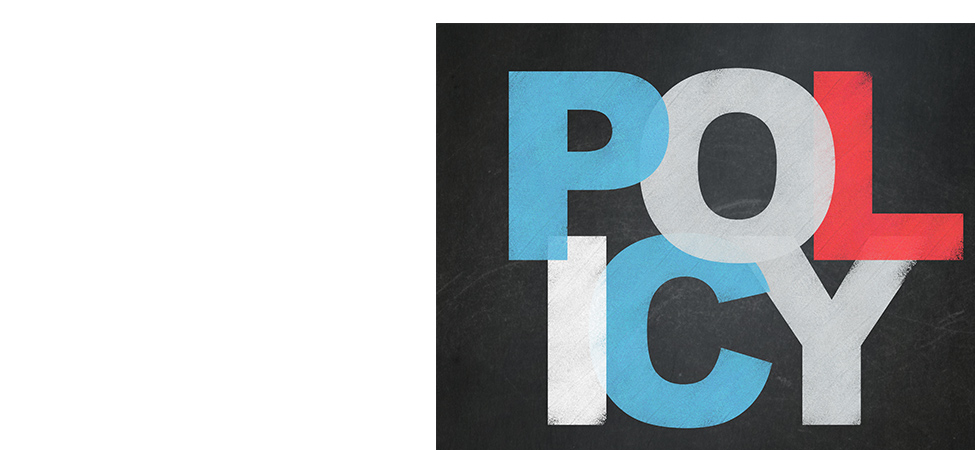The education sector is always subjected to the fluctuations of public policy – and 2017 will be no exception. Upcoming policy shifts combined with a general public’s waning confidence in higher education has created an unusual environment through which to maneuver, yet overall the climate seems to be turning in favor of higher education. Here’s a glimpse into the anticipated changes ahead, along with insight into how schools can seize these positive conditions to recover enrollments.
Regulatory Rollback
President Trump has indicated several impending shifts in higher education. There has been recent discussion of rolling back certain regulations within the proprietary sector – ones that many in the sector have blamed for declining enrollments and unwarranted, negative press over the past three years. Though no action has yet been undertaken to eliminate these regulations, in March the Trump administration delayed the enforcement of one of these rules, indicating that there may be a complete rollback in the works.
Chief Executive of Career Education Colleges and Universities Steven Gunderson is quoted in The New York Times as saying, “We’re going to get some regulatory relief, which is desperately needed.” However, Jennifer Flood, CEO of National Compliance Group, recently gave a contrasting opinion in an interview with The frank Agency.
“People are asking, will compliance still be an issue?
Yes – but everyone will follow it, not just proprietary schools.”
Ms. Flood says many in higher education have begun discussing the possibility that the Trump administration, far from removing laws like the Gainful Employment Rule, will extend them beyond the proprietary sphere to nonprofit schools as well. Thus, all degree and certificate granting programs would be subject to the same standard of turning out graduates that are able to find employment and repay their student loans. This would level the playing field, in a sense, but also be extremely difficult to implement for nonprofit schools, since many traditional degree programs tend to be aimed toward general education and do not fall under the label of “career education.” Gainful Employment could, however, be applied only to specific, career-oriented fields or graduate programs.
It is uncertain as of yet which way the regulatory tides will turn. But it appears that either way will be a reprieve for proprietary schools, and should regulations hit nonprofits, there are thankfully some other reforms in the works (outlined below) that may balance out some of the effects.
Student Debt Reform
A heavy obstacle facing prospective students is the growing perception among America’s youth that they will leave college with debt they will be unable to repay. Long a political football, the issue of loan reform was brought to the forefront in the 2016 election debates, due almost entirely to the massive number of individuals in default on their student loans (reported by The Wall Street Journal at over 40%).
To that effect, Congress has discussed the possibility of reauthorizing the Higher Education Act this year. This would enable lawmakers to revisit the law and streamline it to allow for better access to financial aid, while driving down tuition costs. President Trump has also proposed his own student loan reform, which would consist of income-based repayments and a forgiveness plan if the student pays faithfully for 15 years.
Should one or both of these possibilities take effect, it could boost confidence among prospective students enough to see higher levels of enrollment across the board.
The Comeback of Year-Round Pell Grants?
Yet another potential enrollment booster is an upcoming proposal to reinstate year-round Pell grants for students. This program, which allowed students to receive grants for summer classes, was done away with in 2012 by the Obama administration due to budget pressures as Pell costs ballooned in the wake of the recession. A 2016 proposal to reinstate year-round Pell opportunities met with political friction and ultimately died on the vine, despite cost stabilization and some bipartisan support.
However, Congress now appears favorable to a new incarnation of the program, which has been adjusted to accommodate some of the budgetary constraints that were an issue in the previous round. Should it pass, those motivated students who desire to continue their education throughout the summer can receive the support they need to do so, which would increase summer enrollments.
Shifting Policy, Challenging Assumptions
Politics aside, there are indications that higher education may receive some significant breaks from policymakers this year, which would go further than just improving enrollment figures. Since public policy and public opinion tend to go hand-in-hand, expanding measures toward education may actually have a positive influence on public opinion. This creates the perfect opportunity for schools to reclaim enrollments by challenging some prevailing assumptions.
This will require a number of adjustments to the current status quo:
Increased transparency.
Public skepticism can only be dispelled by transparency. Institutions who offer career-focused or career-advancing programs will need to be forthcoming with statistics on graduates’ performance in the job market. This ensures a trustworthy perception, and thus, a more preferable selection.
Active involvement in career placement.
A growing sample of prospective and present students are more concerned with whether their educational investment will yield a career. Schools that wish to increase their student success rate will need to take an active role in helping soon-to-be-graduates in finding job opportunities. Whether this is through internships or a job notification system, career assistance will help graduates find the employment they need while proving the case that education is indeed valuable.
Deliberate messaging through marketing.
Institutions can make great headway in influencing perceptions by simply assessing the messages they’re sending. Marketing that is clearly student-centric and conveys priorities that resonate with specific audience segments creates confidence in potential and even current students.
With these considerations in place, schools can be prepared to take advantage of the favorable political climate, and position themselves for progress in the coming years.

